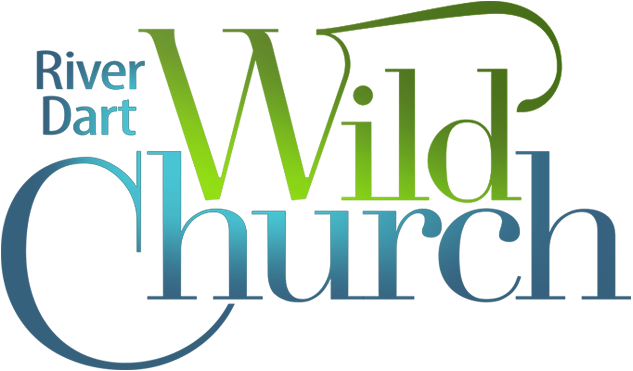The first Sunday of October 2021 saw us back in Cornworthy churchyard, gathered in a circle with environmental social scientist, Dr Fiona Tilley. This was our first collaboration with Tilley and it was fascinating to receive insights she has distilled on contemporary indigenous ways from her work at Schumacher College and which she shared with honesty, gentleness and sensitivity. She gathered us together through sacred chant and meditative reflections on her experience of symbolism associated with the four directions. My (Sam’s) impression is that our pilgrims today found this a helpful tool, although we also acknowledge that there can be questions about the origins of ‘medicine wheel’ teachings and the extent to which they may sometimes misrepresent and misappropriate Native American traditions and cultural heritage.
Yet whatever symbolism we may or may not associate with the directions, whatever meaning we may make and whatever the questions about sources (important as these are), I feel there is something fundamentally helpful about taking time to pause in a place and orientate ourselves… to have an easterly sense of where the sun rises, a southerly sense of its noon peak, a westerly sense of its setting and of those more shadowed, northerly aspects in a landscape. (Allowing for the fact that these points shift somewhat through the seasons). A churchyard can help us with this, as the altar within invites us to look east, towards the light of dawn and all forms of new beginnings. Taking time for outer orientation can help us to feel more grounded, more centered and more connected to the community of life around us. It can be also be an invitation to reflect on inner orientation… on understanding where we have come from and setting intentions for where we are going.
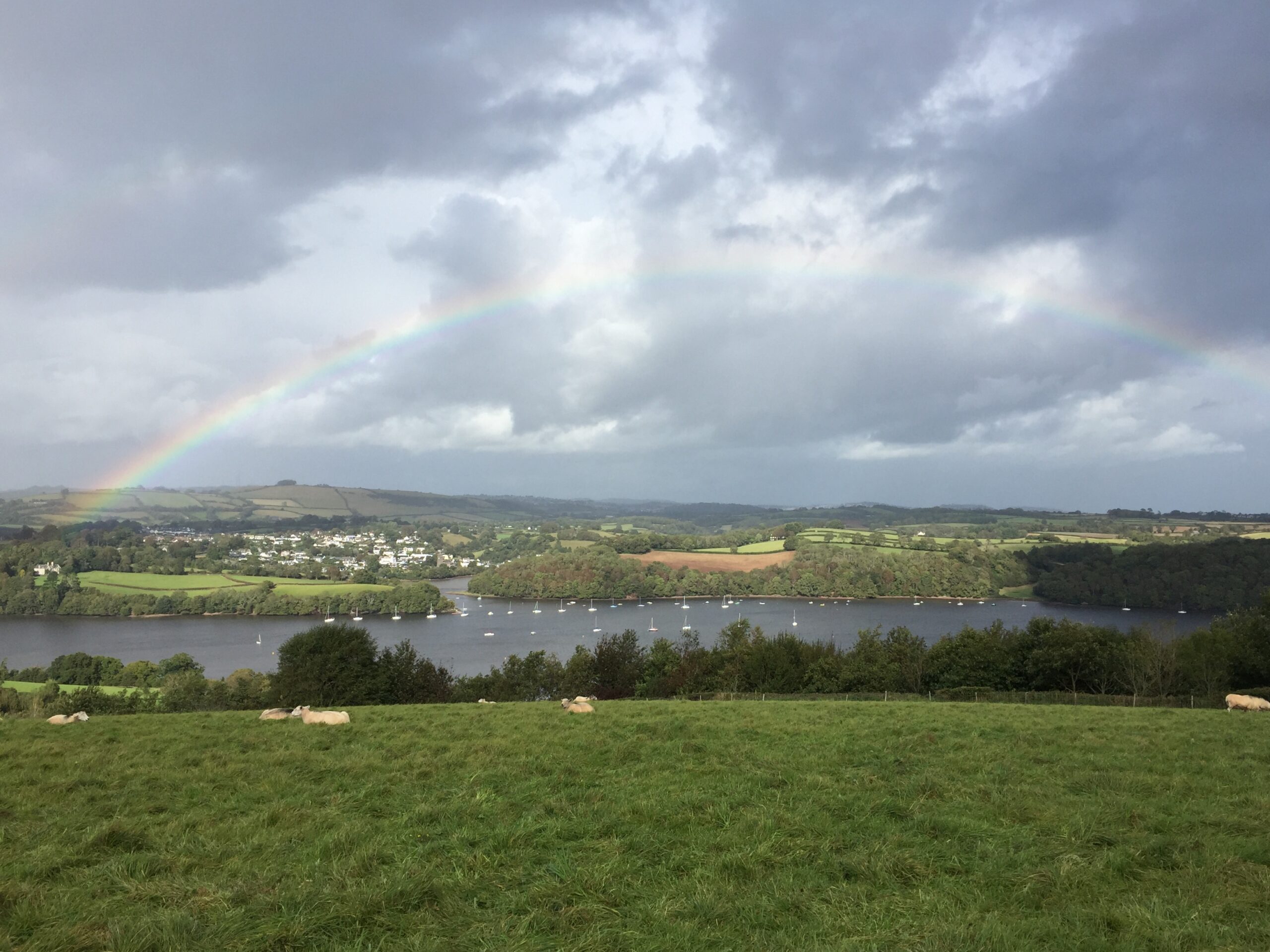
Setting off today on our outer journey together then drew us up a long, deep lane out of Cornworthy village and up to the heights from where we could look over the River Dart and see something of where she comes from, with Dartmoor in the distance, and where she is going, as she widens and wends her way towards the sea. As we paused at this point to listen to this poem, rainbows appeared over the land and water:
Keeping Quiet by Pablo Neruda
Now we will count to twelve
and we will all keep still
for once on the face of the earth,
let’s not speak in any language;
let’s stop for a second
and not move our arms so much.
It would be an exotic moment
without rush, without engines;
we would all be together
in a sudden strangeness.
Fishermen and women in the cold sea
would not harm whales
and the people gathering salt
would not look at their hurt hands.
Those who prepare green wars,
wars with gas, wars with fire,
victories with no survivors,
would put on clean clothes
and walk about with their brothers and sisters
in the shade, doing nothing.
What I want should not be confused
with total inactivity.
Life is what it is about…
If we were not so single-minded
about keeping our lives moving,
and for once could do nothing,
perhaps a huge silence
might interrupt this sadness
of never understanding ourselves
and of threatening ourselves with
death.
Now I’ll count up to twelve
and you keep quiet and I will go.
Extravagaria : A Bilingual Edition by Pablo Neruda, Alastair Reid (Translator) Noonday Press; (January 2001) page 26
Please note that the version above, which we heard & loved, may include some small edits from Tilley.
For the next stage of our pilgrimage, as we descended towards the river, Tilley invited us into a practice of making offerings (in this case small pinches of local oatmeal in spots we felt drawn to as we journeyed on) that express our appreciation for the earth where we find ourselves. I think this is an interesting way to remember to pause when walking and be really attentive to where we find ourself in that moment. I found myself wondering, if simply stopping quietly to be more fully present and curious may sometimes be the best offering I can make, as I personally prefer to travel light and leave nothing behind along the Way.
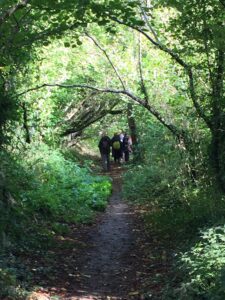
As we walked the lanes, gradually the wide views over the river and farmland disappeared and we dropped into the deep valleys that are such a fabulous feature of South Devon. Turning off onto the footpath at East Cornworthy, we now had more intimate perspectives as we wandered alongside a woodland stream and then a sheep cropped path across steep meadows.
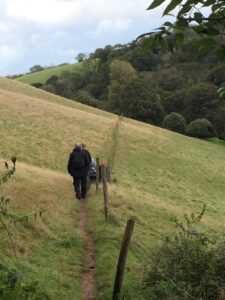
As we came to our next pausing place, after crossing Dittisham Mill Creek, we had a new, seaweed strewn, water-level view of the widening Dart in the distance and were not far from our destination in Dittisham, better known locally as ‘Ditsum’. It was quite a different experience to contemplate the brackish, tidal water here and the diversity of life this supports and attracts. There were many woodland birds in the trees and water fowl below, including two magnificent swans powering serenely upstream. There were large fish cutting wakes through the water, perhaps bass or salmon, some of whom also seemed to be heading upstream.
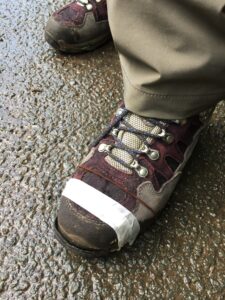 We meanwhile were headed downstream, which initially took us away from the water and up a steep hill (pausing for some emergency walking boot repair!) towards the village, and then back down again towards St George’s Church. This made a beautiful sanctuary for our final time of shared, meditative silence and is clearly a well loved and well tended church. I particularly appreciated the Lady Chapel to the side, where a candle was burning before a lovely, little statue of Mary – a perfect place to make a wish or say a quiet prayer. It also raised a smile to see this character below, on the pulpit.
We meanwhile were headed downstream, which initially took us away from the water and up a steep hill (pausing for some emergency walking boot repair!) towards the village, and then back down again towards St George’s Church. This made a beautiful sanctuary for our final time of shared, meditative silence and is clearly a well loved and well tended church. I particularly appreciated the Lady Chapel to the side, where a candle was burning before a lovely, little statue of Mary – a perfect place to make a wish or say a quiet prayer. It also raised a smile to see this character below, on the pulpit.
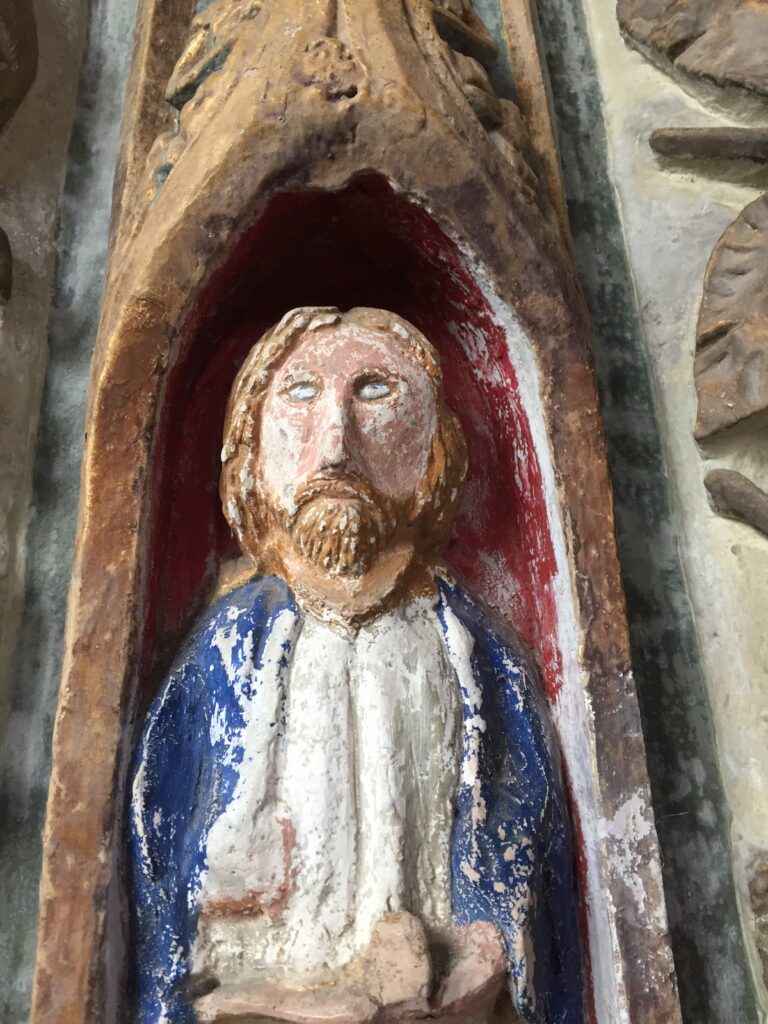
Our afternoon ended with a moving sharing circle outside in the churchyard, under the wide shelter of an old yew tree, and then a lovely meeting with the warm and friendly church warden. She and I had already been in touch about the publication of an article about river issues – ‘Murky Waters: The Battle for our Rivers’ – that same weekend in the Telegraph, which included details of the River Dart Charter (and included a photo of yours truly!) So it was a particular pleasure to give her a copy of our Dartington charter to reflect our shared concerns about the magnificent River Dart, which is a source of life and livelihood for so many. Deep thanks to all that made this another special ‘wander and wonder’ within our Sacred Waters Way.
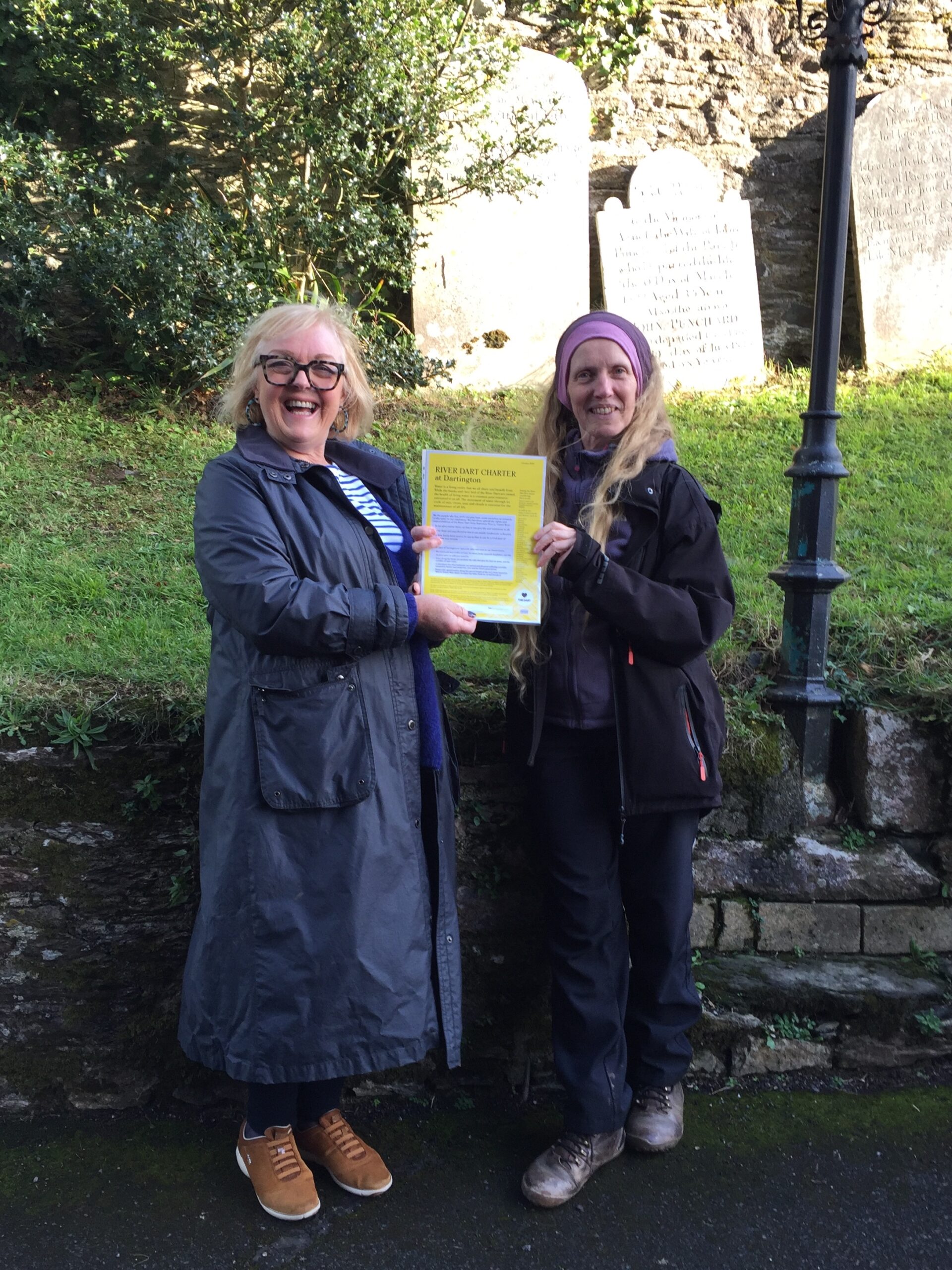
Words & photos by Sam Wernham
